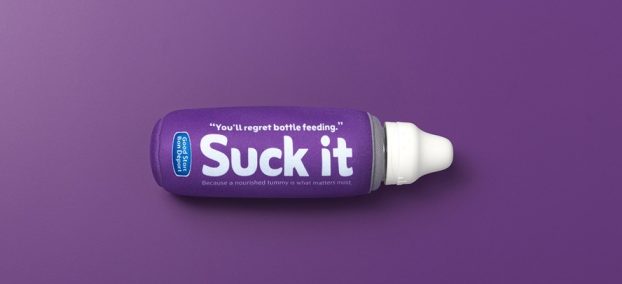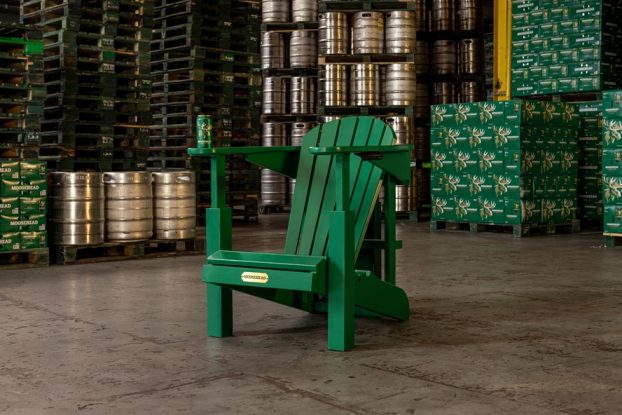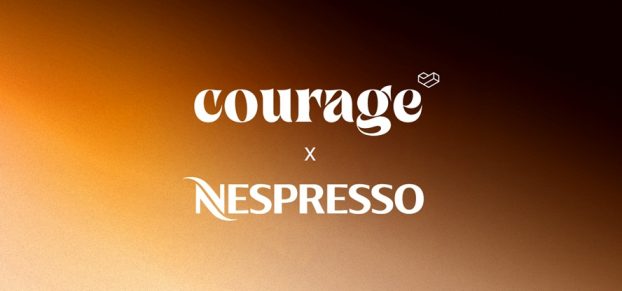Is there some sort of mystery formula that equates the volume of beer one drinks to the number of T-shirts one needs?
It would seem so, if the prevalence of in-case premiums in the beer market is any indication. In lighter moments, it’s easy to imagine an enthusiastic beer drinker never having to shop for something as mundane as a T-shirt again.
‘The use of in-pack premiums has grown quite dramatically over the last few years between ourselves and Molson,’ says Charles Oliver, VP of marketing for Labatt Breweries of Canada. ‘There are potentially four or five in-pack premiums going on at any point in time.’
While T-shirts are always popular – in Western Canada, where the retail environment is more open, consumers can compare the quality of shirts before making their purchasing decision – beer marketers have also managed to fill their cases with everything from Stanley Cups to watches.
In the last two years, the activity hasn’t slowed down by any stretch – but it has become a lot more strategic. ‘We’re getting much more disciplined about researching promotional ideas,’ says Oliver, adding that the days of an in-pack premium simply catching a marketer’s fancy are over.
‘Given the scope, complexity and cost of doing these programs, you need to make sure that you’re hitting the mark,’ he says. ‘It has to consistently support your brand positioning and create more of a brand experience to build loyalty – not build premium shopping.’
Oliver has struck upon the sad fact of in-pack premiums. Like children choosing their own box of cereal, fickle consumers not only compare trinkets as part of their purchasing decision, but actually come to expect something in their cases.
‘The problem that happens in many industries is that, over time, the playing field gets leveled and the net result is negated,’ he says. ‘The risk over time is that we’re actually triggering consumers to shop for premiums, which is not building brand loyalty.’
There’s no question beer drinkers are shifting from one brand to another based solely on in-pack offers, says Bob Scott, president of Ascot Marketing, a Toronto-based market research firm that specializes in the beer and mutual funds industries.
‘Consumers are very much expecting to find something in their packs,’ he says. ‘It’s almost become part of the brand.’ The danger, of course, is that this activity has no proven positive results for the brands, save for short sales bursts.
The key upon which beer marketers seem to be relying is to develop in-pack premiums that leverage other promotional properties. For instance, who could forget Labatt’s powerful Stanley Cup giveaway several years ago. The miniature Cups proved so popular to beer drinkers that an eight- to 10-week Ontario supply – about 750,000 cases – sold out in less than five weeks.
Since then, the company has become even more sophisticated about leveraging its sports associations (Blue is aligned with the NHL, and Budweiser with the NFL). Oliver says these types of in-pack premiums work because they are unique and strategic branding tools.
Strategic alignment is the number one consideration for an in-pack premium – even before trial encouragement, agrees Susan O’Brien, national brand manager for Coors Light. ‘You want a lot of people to want it but your most important job is to make sure it helps your brand.’
Coors was a latecomer to the in-pack premium game, entering the market only four years ago with a T-shirt promotion that proved immediately popular.
T-shirt giveaways, now a regular part of the Coors mix, have evolved significantly since then, she says. ‘The first year, the company did the more typical beer T-shirts, but in order to strategically align the shirt with the brand, we needed a more hip design.’
The company hired a designer who scouted top young adult hangouts and popular stores and came up with several designs – one featured a distressed look, while another had a university-style logo, for example – which were turned into a collectible series. ‘It’s one of the only times that we ever take any liberties with our logo design,’ she says.
While O’Brien concedes that there’s no evidence in-pack premiums help maintain consumer purchase levels after a giveaway ends, she says they can help build a brand’s image – if done right.
This past summer, for example, the company launched ‘Clean Shirt,’ a TV spot that looked like a Coors Light branding ad. Created by Harrod & Mirlin/FCB, in conjunction with promotional agency Marketing Drive Worldwide, both of Toronto, the spot featured a guy doing his laundry. He picks up the Coors Light shirt and surreptitiously sniffs it, bringing back the previous evening’s good times.
The giveaway was mentioned in the middle of the spot, but it looked for all intents and purposes like a brand spot, O’Brien says. ‘Research shows that this ad did more to increase our equity than other brand ads.’ Creating that connection for a consumer is what can, over time, help a brand grow.
While in-pack premiums don’t help in the brand loyalty department, they can definitely aid in the development of a brand’s imagery, agrees Andrew Barrett, VP of marketing for Molson Canada.
Consider Molson’s long-term relationship with Roots Canada, where it occasionally features Roots garb and accessories in its Molson Canadian cases. With both players enjoying and working on their ‘Canadian icon’ status, this alliance is arguably one of the best examples of mutual brand-building through premiums.
Stand-alone spots promoting the in-pack premiums, as opposed to mere 5-second tags, are another way Molson is tying its premiums to brand imagery.
For instance Molson’s recent Team Canada premiums star in their very own spot, ‘Force from the North,’ wherein a bus full of hockey fans, wearing over-the-top team spirit garb, are stopped at a border. The bus goes silent as the customs agent asks if there is anything to declare, and the bus driver murmurs ‘just a bunch of shirts.’ Then a fan stands up, yelling ‘…and a big old can of whoop-ass!’ The spot further cements the brand’s relationship with hockey in the country, while promoting the in-case Team Canada shirts.
This February, Molson is continuing in the nationalist spirit with a new promotion that ties into a Canadian icon of Molson’s own making: Four T-shirts will build on the Joe Canadian property initiated by Bensimon*Byrne D’Arcy’s famous ‘Rant’ spot.
One T-shirt will feature the well known ‘I am Canadian’ logo, while the second shows a beaver. The third features a flag on the back of the shirt (to represent the backpack Joe mentions in the original spot), and the fourth states ‘Canada Kicks Ass’ – a call to pride that proved highly popular during the company’s Snow Jam promotion last summer, according to Barrett.
The promotion will also feature a 15-second stand-alone TV spot that will, he assures, play off the fact that Canadian backpackers do insist on wearing nationalistic garb when travelling.
Beer premiums certainly seem like they’re here to stay. In fact Barrett says that for the past two years, in-pack premiums have been available almost year-round. But is that a good thing?
‘It’s hard to say,’ he says. ‘They certainly have their role.’
He says that a premium is judged successful these days when it goes beyond encouraging trial and into solidifying relationships with key promotional properties. When people are willing to turn into walking billboards – wearing items that tie Molson brands into hockey (the Team Canada hockey shirts distributed this past December) or cool winter activities (Snow Jam shirts) – there are lasting effects, even if they’re not immediately measurable.
There are times when the company itself makes the mistake of forgoing its own strategy, however. Last summer, Molson included in-pack bumper stickers in some of its B.C. cases. The stickers featured humorous expressions (such as ‘Home is where the cooler is’) but were not tied into any major property.
Barrett cites this as an example where the company didn’t do as good a job in the development stage as it perhaps should have, as the premiums did little to enhance the image of any individual Molson brands.
Overall, Barrett compares the beer industry’s embrace of in-pack premiums to the strategy used by fast food chains, though slightly less developed. Burger King and McDonald’s vigorously tie their kids meals to entertainment properties – and they clearly work, at least in the short term, he says. ‘What they’ve done on their kids portfolio is exactly what we’re doing.’
But even with strategic tie-ins, some say the whole concept of premiums – giving something away to get people to buy your product – can devalue a brand. For instance, such giveaways certainly wouldn’t work for premium brands, says analyst Scott.
By not taking part in the premium wars ‘they’re not devaluing their brands in any way,’ he says of the more upscale labels. In fact, sales figures for the last few years indicate that sales for many of the brands featuring in-pack giveaways are staying flat or losing ground, while premium brands surge ahead.
Labatt, for one, plans to take a lesson from the premium brands and expects to engage in a more balanced approach to in-pack activity this coming year, says Oliver. ‘We need to get back to educating the consumer about [the quality of domestic beer] and make them believe that the value equation is there without having to substantiate their purchase with a premium.’
A recent Labatt Blue spot highlights this slight shift in strategy. Developed by Ammirati Puris, ‘Slide’ shows a bartender sliding a Blue to a customer. As the bottle turns, the viewer sees all the incarnations the label has boasted over the years, finally ending on its current label.
Such efforts, which hark back to the rich history of the Labatt Blue brand, engender a much stronger positioning than any premium could, Oliver says. ‘It’s about getting back to the roots of the business and talking about the beer.’






















